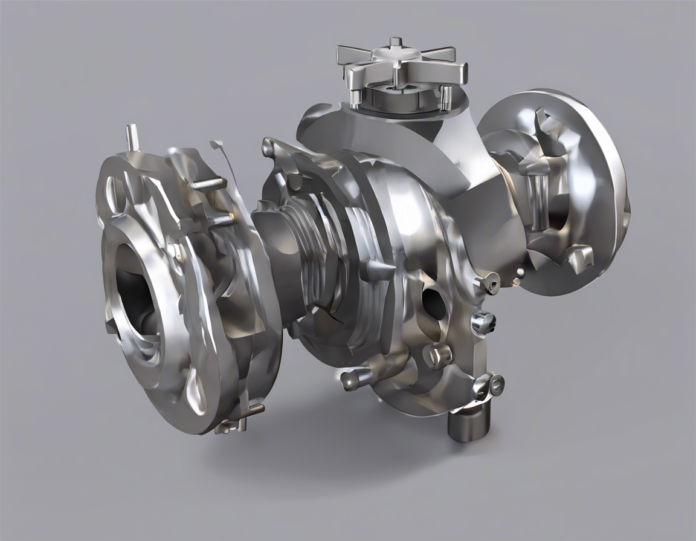The Thebesian valve is a small, flap-like structure found in the heart. It is located at the opening of the coronary sinus, which is a vein that collects deoxygenated blood from the heart muscle. While often overlooked compared to better-known structures in the heart, the Thebesian valve plays a crucial role in regulating blood flow, maintaining cardiac function, and ensuring efficient oxygenation of the heart muscle.
The Anatomy of the Thebesian Valve
The Thebesian valve is a thin, membranous structure that guards the opening of the coronary sinus into the right atrium of the heart. It is comprised of connective tissue and smooth muscle fibers, allowing it to flex and move in response to changes in blood flow and pressure within the heart.
Function of the Thebesian Valve
-
Regulation of Blood Flow: The Thebesian valve acts as a valve or flap that helps prevent backflow of blood from the right atrium into the coronary sinus. This is important because it ensures that blood traveling through the coronary circulation is not returned to the right atrium, allowing for proper distribution of oxygenated blood to the heart muscle.
-
Maintenance of Cardiac Function: By regulating blood flow, the Thebesian valve helps maintain optimal cardiac function. It assists in keeping the blood moving in the right direction, minimizing the risk of congestion or inefficient circulation within the heart.
-
Protection Against Pressure Overload: The Thebesian valve also plays a role in protecting the heart against pressure overload. During periods of increased cardiac output or elevated blood pressure, the valve helps prevent excessive strain on the coronary sinus and surrounding structures by maintaining appropriate blood flow dynamics.
Importance of the Thebesian Valve in Heart Health
-
Optimal Oxygenation: Proper functioning of the Thebesian valve is essential for ensuring that the heart muscle receives an adequate supply of oxygenated blood. This is crucial for the heart to perform its pumping function efficiently and meet the metabolic demands of the body.
-
Prevention of Congestion: By preventing backflow of blood, the Thebesian valve helps prevent congestion in the coronary circulation. Congestion can lead to impaired oxygen delivery to the heart muscle, potentially resulting in chest pain (angina), heart failure, or even myocardial infarction (heart attack).
-
Support for Cardiovascular Performance: The Thebesian valve contributes to the overall performance of the cardiovascular system by maintaining the integrity of the coronary circulation. A healthy and functional valve ensures that blood is delivered to the heart muscle in the most efficient manner, supporting optimal cardiac output and overall cardiovascular health.
Dysfunction of the Thebesian Valve
While the Thebesian valve usually functions effectively in regulating blood flow and supporting heart health, certain conditions can lead to its dysfunction. These may include:
-
Congenital Anomalies: Some individuals may be born with structural abnormalities in the Thebesian valve, leading to issues with its ability to regulate blood flow properly.
-
Valvular Disorders: Conditions affecting the function of heart valves, such as tricuspid regurgitation, can impact the performance of the Thebesian valve indirectly by altering pressure dynamics within the heart.
-
Coronary Sinus Abnormalities: Any abnormalities or blockages in the coronary sinus itself can affect the function of the Thebesian valve and disrupt blood flow dynamics in the heart.
FAQs about the Thebesian Valve
-
What is the role of the Thebesian valve in the heart?
The Thebesian valve helps regulate blood flow, prevent backflow from the right atrium to the coronary sinus, and support optimal oxygenation of the heart muscle. -
Can dysfunction of the Thebesian valve lead to heart problems?
Dysfunction of the Thebesian valve can contribute to issues such as impaired oxygen delivery to the heart muscle, congestion in the coronary circulation, and compromised cardiovascular performance. -
Are there specific conditions or diseases that can affect the Thebesian valve?
Congenital anomalies, valvular disorders, and coronary sinus abnormalities are among the factors that can impact the function of the Thebesian valve. -
How is the Thebesian valve different from other valves in the heart?
The Thebesian valve is distinct from the major heart valves (such as the atrioventricular and semilunar valves) and primarily functions to regulate blood flow at the opening of the coronary sinus. -
Can the Thebesian valve be repaired or treated if it malfunctions?
Treatment for dysfunction of the Thebesian valve depends on the underlying cause and may involve interventions to address associated heart conditions or structural abnormalities.
In conclusion, while the Thebesian valve may be small in size, its significance in heart function should not be underestimated. By helping to maintain proper blood flow, support cardiac performance, and ensure efficient oxygenation of the heart muscle, this often-overlooked structure plays a vital role in cardiovascular health and overall well-being. Understanding its anatomy, function, and importance can provide valuable insights into the intricate workings of the human heart and the complexities of circulatory physiology.


